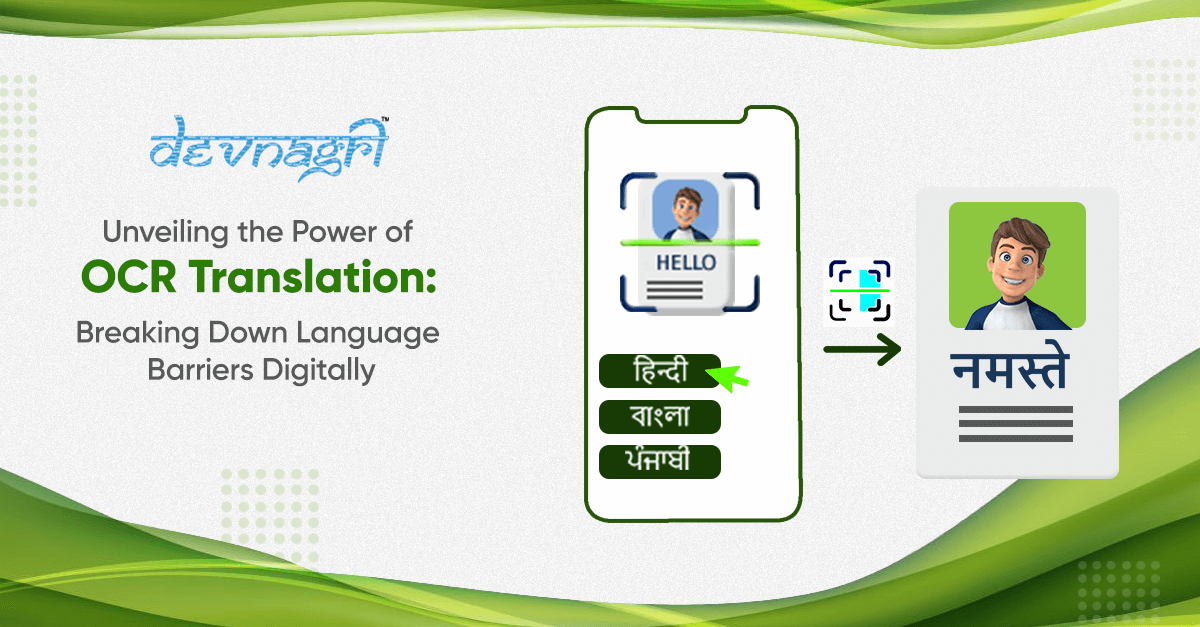
In today’s interconnected world, where globalization has seamlessly integrated different cultures and languages, breaking down language barriers is paramount. Whether it’s for business communication, academic research, or simply connecting with people from diverse backgrounds, the ability to translate text across languages is invaluable. However, traditional translation methods often involve tedious manual processes or reliance on human translators, which can be time-consuming and costly. Enter OCR translation – a revolutionary technology that combines Optical Character Recognition (OCR) with translation capabilities, promising to streamline and democratize language translation like never before.
Also Read: Navigating the Nuances of Media Translation
OCR, a technology that converts various types of documents, such as scanned paper documents, PDF files, or images, into editable and searchable data, has been around for some time. Initially used primarily for digitizing printed documents, OCR has evolved significantly, thanks to advancements in artificial intelligence and machine learning. Today, OCR technology can not only recognize text accurately but also understand and translate it into different languages, paving the way for efficient and convenient translation solutions.
Also Read: The Power of eLearning Translation: Bridging Gaps and Expanding Horizons
So, how does OCR translation work, and what makes it so powerful?
At its core, OCR translation involves two main processes: text recognition using OCR and subsequent translation using machine translation algorithms. Here’s a simplified breakdown:
- Optical Character Recognition (OCR): The first step in OCR translation is to extract text from the source document or image using OCR technology. OCR algorithms analyze the image, identify individual characters, and convert them into machine-readable text. This process is crucial for accurately recognizing and extracting text from various types of documents, including printed materials, handwritten notes, or even text embedded within images.
- Machine Translation: Once the text has been extracted using OCR, machine translation algorithms take over to translate it into the desired language. Machine translation systems leverage vast amounts of linguistic data and complex algorithms to generate accurate translations. These systems continuously improve through machine learning, refining their translation capabilities over time.
Also Read: Unlocking Global Audiences with a Website Translator
Together, OCR and machine translation form a powerful duo, capable of quickly and accurately translating text across languages with minimal human intervention. This seamless integration of OCR and translation technology offers numerous benefits:
- Efficiency: OCR translation automates the process of text extraction and translation, significantly reducing the time and effort required compared to manual translation methods. It enables organizations to process large volumes of documents rapidly and efficiently, improving overall productivity.
- Accuracy: Modern OCR technology boasts impressive accuracy rates, ensuring reliable text recognition even from complex documents or poor-quality images. When coupled with advanced machine translation algorithms, OCR translation delivers translations that are not only fast but also highly accurate.
- Accessibility: OCR translation tools are accessible to a wide range of users, regardless of their linguistic abilities. From multinational corporations conducting business across borders to individuals communicating with friends and colleagues from different countries, OCR translation democratizes language translation and fosters greater global connectivity.
- Cost-Effectiveness: By automating the translation process and minimizing the need for human intervention, OCR translation can lead to significant cost savings for organizations. It eliminates the need to hire professional translators for routine translation tasks, making language translation more accessible and affordable.
Also Read: Enhancing Your Reach and Impact: The Importance of Website Translation
Despite its many advantages, OCR translation is not without its limitations. While OCR technology has made significant strides in accurately recognizing text, it may still struggle with handwritten or poorly scanned documents. Similarly, machine translation algorithms may encounter challenges with context-specific or idiomatic expressions, resulting in translations that may not always capture the nuances of the original text.
Also Read: The Crucial Role of Finance Translation: Bridging Global Markets
Nevertheless, ongoing advancements in OCR and machine translation technology continue to address these challenges, driving further improvements in accuracy and reliability. Additionally, hybrid approaches that combine OCR translation with human review or post-editing can help mitigate potential errors and ensure high-quality translations, particularly for sensitive or complex content.
Also Read: Breaking Language Barriers: The Power of Website Translators
In conclusion, OCR translation represents a groundbreaking advancement in the field of language translation, offering unprecedented speed, accuracy, and accessibility. By harnessing the power of OCR technology and machine translation algorithms, organizations and individuals can overcome language barriers more effectively than ever before. As OCR translation continues to evolve and mature, its transformative impact on global communication and collaboration is poised to grow, ushering in a more connected and multilingual world.





